FEA (Finite Element Analysis)
FEA is used to ensure that structural and mechanical products will support their design loads. Classical stress
analysis (CSA) is used on common structural components when mechanical properties are known. FEA is used on
uncommon shapes whose mechanical properties are not known, or for structures that are too complex for CSA.
When running a FEA analysis, a SolidWorks model of the product is constructed. This model is imported into
SolidWorks Simulation, where material properties, boundary conditions and loads are applied. After the FEA analysis
is run, stress and deflection plots, like the examples shown below, are generated. These stress values in these
plots are compared to the product's material yield strength to ensure he product's structural integrity.
FEA Analyzed Models
The slide show below shows the FEA results of mechanical and structural components when subjected to their
respective design loads.
Tent Support Structure Stress, Load = 100 mph (161km/hr) Wind.
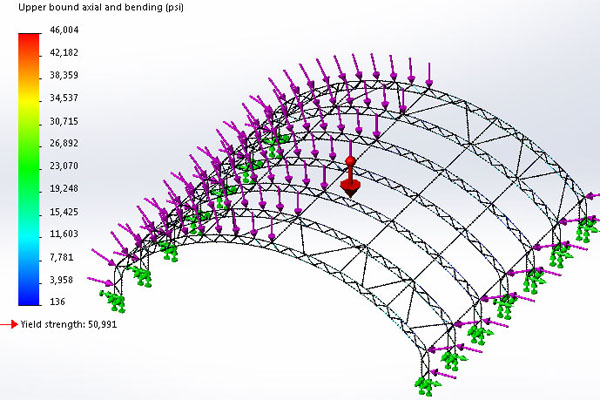
Chain Hook Stress, Load = 5 kips (22.2 kN).
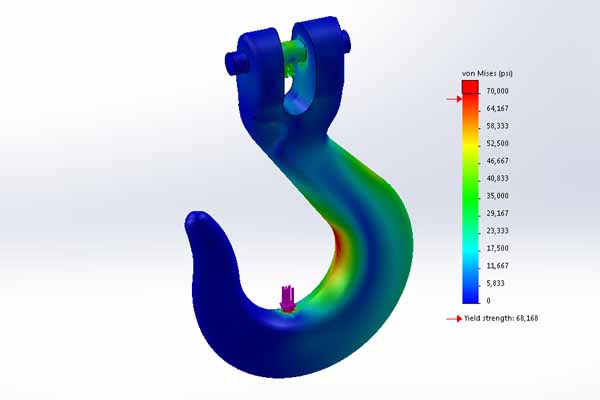
IPV Stress, External Pressure = 1000 psi (6.9 MPa).
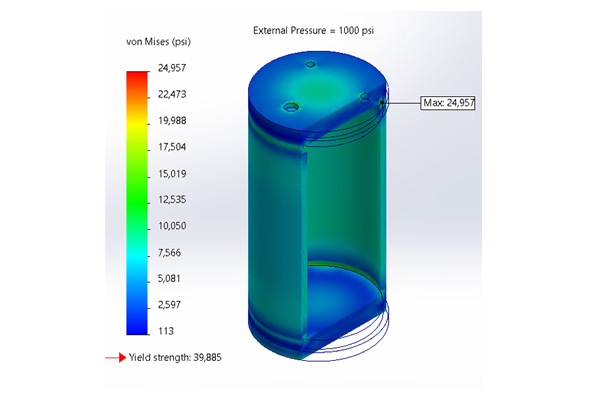
Armored Cable Termination Stress, Load = 10 kips (44.5 kN).
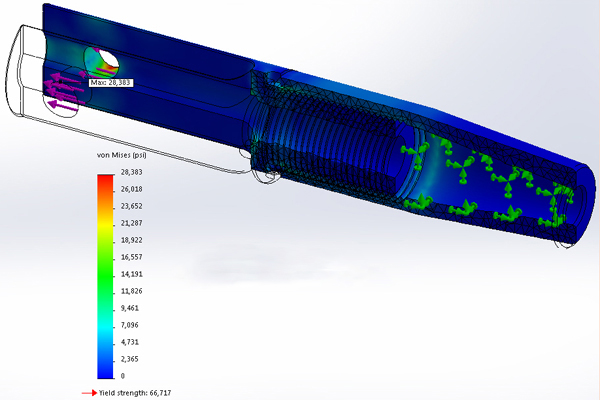
Boat Lift Piling Support Stress, Load = 3 kips (13.3 kN).
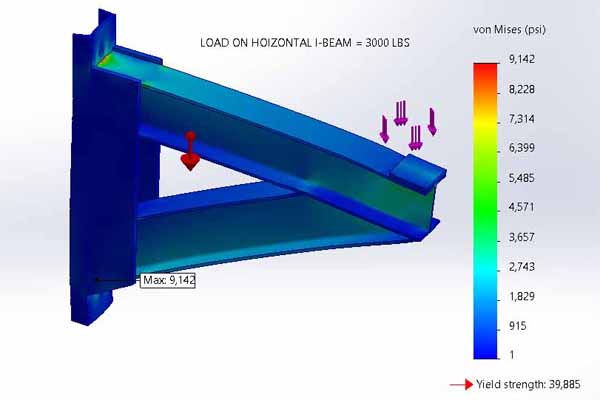
BLAT Drive Pipe Stress, Load = 2000 kips (8.9 MN).
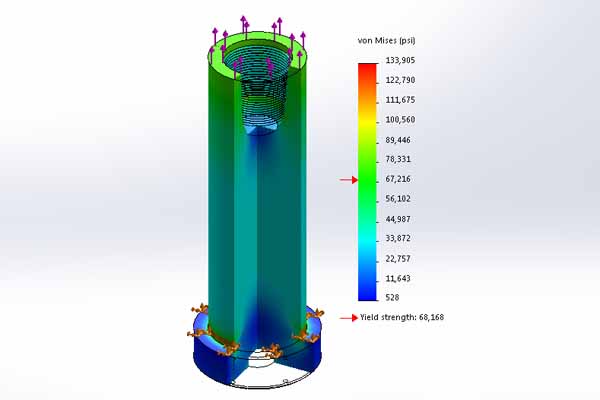
BLAT Top Breech Lock Stress, Load = 2000 kips (8.9 MN) .
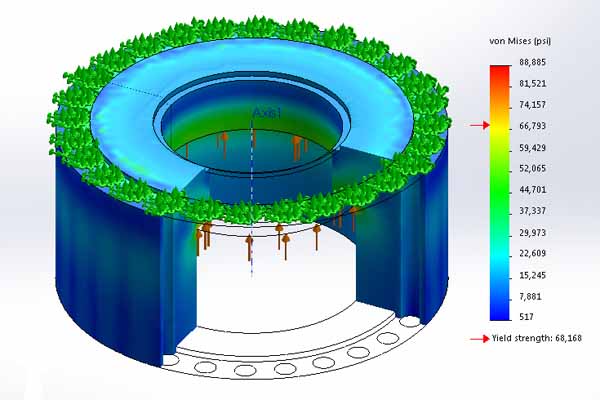
Storage Tank Weldment Stress, Load = 24 kips (106.8 kN) .
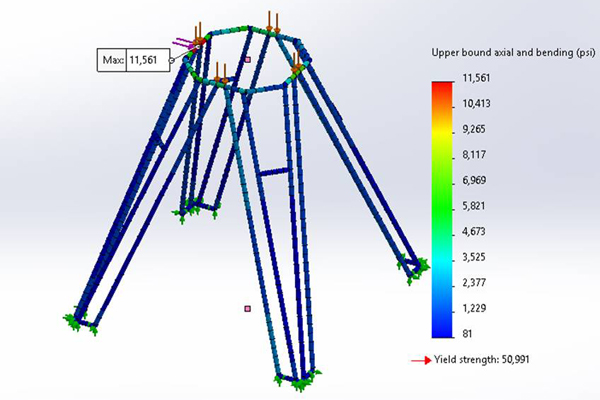
Slurry Gate Valve Stress, Load = 90 psi (620.5 kPa) .
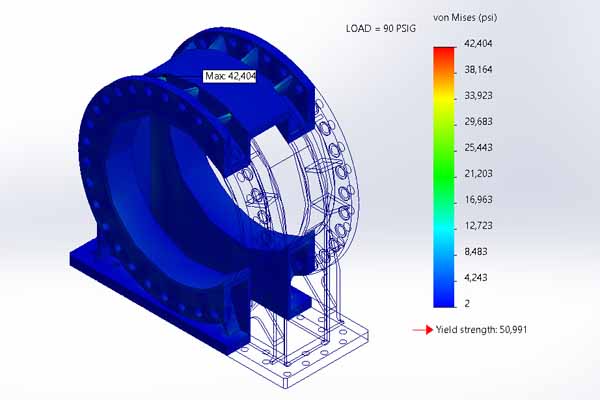
Slurry Gate Valve Deflection, Load = 90 psi (620.5 kPa) .
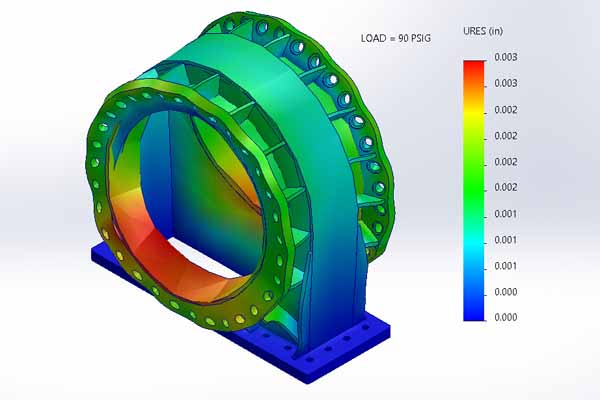
Anchor Chain Hook Stress, Load = 12 kips (53.37 kN) .
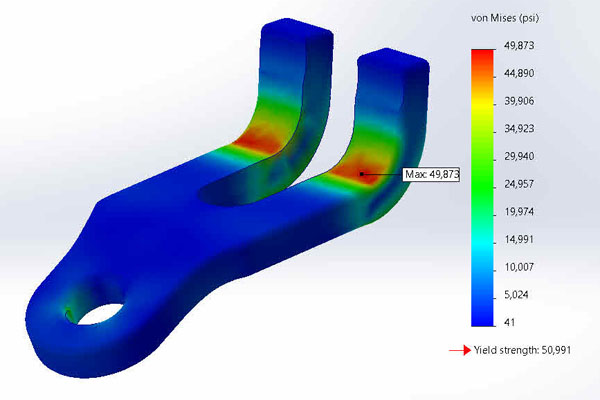
What FEA Can Do For You
FEA is used to calculate stress
and deflection in machine parts,
assemblies, & weldments
subjected to design loads
whose complex geometries
don't allow the use of CSA.

SolidWorks Simulation uses FEA
to improve a product's reliability
by predicting its behavior when
subjected to it's design loads.
Classic Beam Stress Analysis Example
Click on the STRESS FAILURE
CRITERIA ICON below to see a
MapleSoft I-Beam stress
analysis that calculates stress
& deflection in two (2) I-Beams
when they are subjected to their maximum
allowable load.












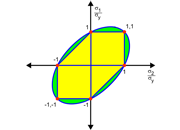
Connect With Us